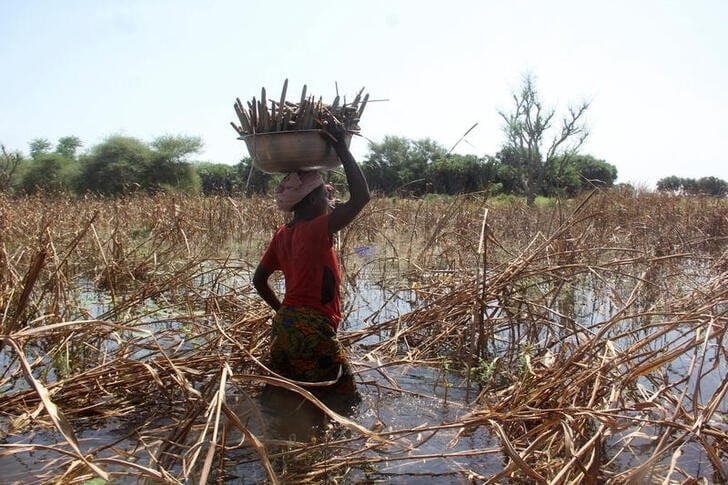
NIAMEY, April 18 (Reuters) – On a hospital bed in Niger, a 96-year-old woman lay motionless attached to a drip – one of thousands of possible victims of West Africa’s worst heatwave in living memory, which a report said on Thursday was linked to fossil fuel-driven climate change.
In late March and early April, days and nights of extreme heat above 40° Celsius (104°F) gripped many West African countries. Temperatures soared so high in Mali and Burkina Faso they equated to a once in 200-year event, according to the report on the Sahel region by World Weather Attribution (WWA).
The severity of the heatwave led WWA’s team of climate scientists to conduct a rapid analysis, which concluded the temperatures would not have been reached if industry had not warmed the planet by burning fossil fuels and other activities.
“In a pre-industrial climate, we wouldn’t expect to see heat waves at this intensity at all,” WWA statistician Clair Barnes told Reuters.
“It was the hottest that anyone in living memory has had to deal with (there),” she said.
Despite a lack of data, WWA estimates there were hundreds or possibly thousands of heat-related deaths, and it warned such extreme heat will become much more common without greater global efforts to reduce planet-warming emissions.
On the current trajectory, if fossil fuel emissions do not fall “we would expect to see heatwaves like this maybe ten times more frequently, so potentially up to ten times a year,” Barnes said.
“It’s something that people are going to have to adapt to and learn to live with.”
Given the growing threat, the group recommends that countries formulate heat action plans that would warn citizens when extreme temperatures are imminent and offer guidance on how to prevent overheating.
ELDERLY AT RISK
The plight of the nonagenarian in Niger illustrates the threat such extreme temperatures pose, particularly to older people in countries where access to air conditioning or even electric fans can be limited.
Standing at the hospital bedside on Monday, daughter Zeynabou Toure described how her mother quickly sickened in the heat at the start of April, prompting them to rush to hospital.
They were among an unusually high number of patients seeking care at the facility in Niger’s sun-baked capital Niamey, said doctor Andia Abdoul-Kader.
“We have seen more and more cases of dehydration,” he told Reuters in his office. “It really affects the elderly … four to five litres of water need to be replenished for the patient to return to normal.”
While Abdoul-Kader has not recorded excess deaths, Gabriel Toure Hospital in the capital of neighbouring Mali reported 102 deaths, likely heat-related, in the first four days of April. This compares to 130 deaths it recorded in total for the whole of April last year.
“This indicates an exceptional situation this year,” said one of the hospital’s department heads, doctor Djibo Mahamane Django, in an online video post on April 5.
(Additional reporting by Cooper Inveen in Dakar and Tiemoko Diallo in BamakoAdditional reporting and writing by Alessandra Prentice; Editing by Aurora Ellis)

